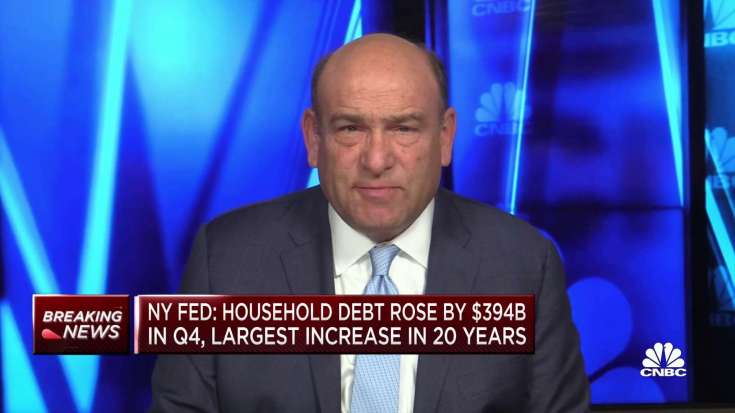
Consumer debt hit a fresh record at the end of 2022 while delinquency rates rose for several types of loans, the New York Federal Reserve reported Thursday.
Debt across all categories totaled $16.9 trillion, up about $1.3 trillion from a year ago, as balances rose across all major categories.
Despite a decline in originations, mortgage balances increased to $11.9 trillion, up about $250 billion from the third quarter and about $1 trillion from a year ago. Originations for new home loans and refinancings fell to $498 billion, less than half where they were for Q4 in 2021 and a drop of about $135 billion from the third quarter.
Mortgage loans considered in “serious delinquency” of 90 days or more rose to a rate of 0.57%, still low but nearly double where they were from the year prior. Auto loan debt delinquencies rose 0.6 percentage point to 2.2%, while credit card debt jumped 0.8 percentage point to 4%.
A bank employee counts U.S. dollar notes at a Kasikornbank in Bangkok, Thailand, January 26, 2023.
Athit Perawongmetha | Reuters
“Credit card balances grew robustly in the fourth quarter, while mortgage and auto loan balances grew at a more moderate pace, reflecting activity consistent with pre-pandemic levels,” said Wilbert van der Klaauw, economic research advisor at the New York Fed.
“Although historically low unemployment has kept consumers’ financial footing generally strong, stubbornly high prices and climbing interest rates may be testing some borrowers’ ability to repay their debts,” he added.
The rise in balances came amid an aggressive rate-hiking campaign from the Fed as it battled inflation running near its highest levels in more than 41 years.
The Fed raised its benchmark rate seven times during the year, adding another increase in January that took the overnight borrowing rate to a target range of 4.5%-4.75%. Included in that series were four consecutive increases of three-quarters of a percentage point, boosting rates for multiple consumer debt instruments such as credit cards, mortgages and auto loans.
Student loan debt also increased for the month, after staying flat during much of the pandemic amid government-backed amnesty for borrowers. The total balance hit $1.6 trillion in the fourth quarter.
Auto loan debt edged higher, to $1.55 trillion, while credit card balances rose to just shy of $1 trillion.
The explosion in consumer debt came amid an ongoing increase in federal government borrowing. Total U.S. government debt now stands near $31.5 trillion, up from $29.6 trillion at the end of 2022, according to Treasury Department data.


